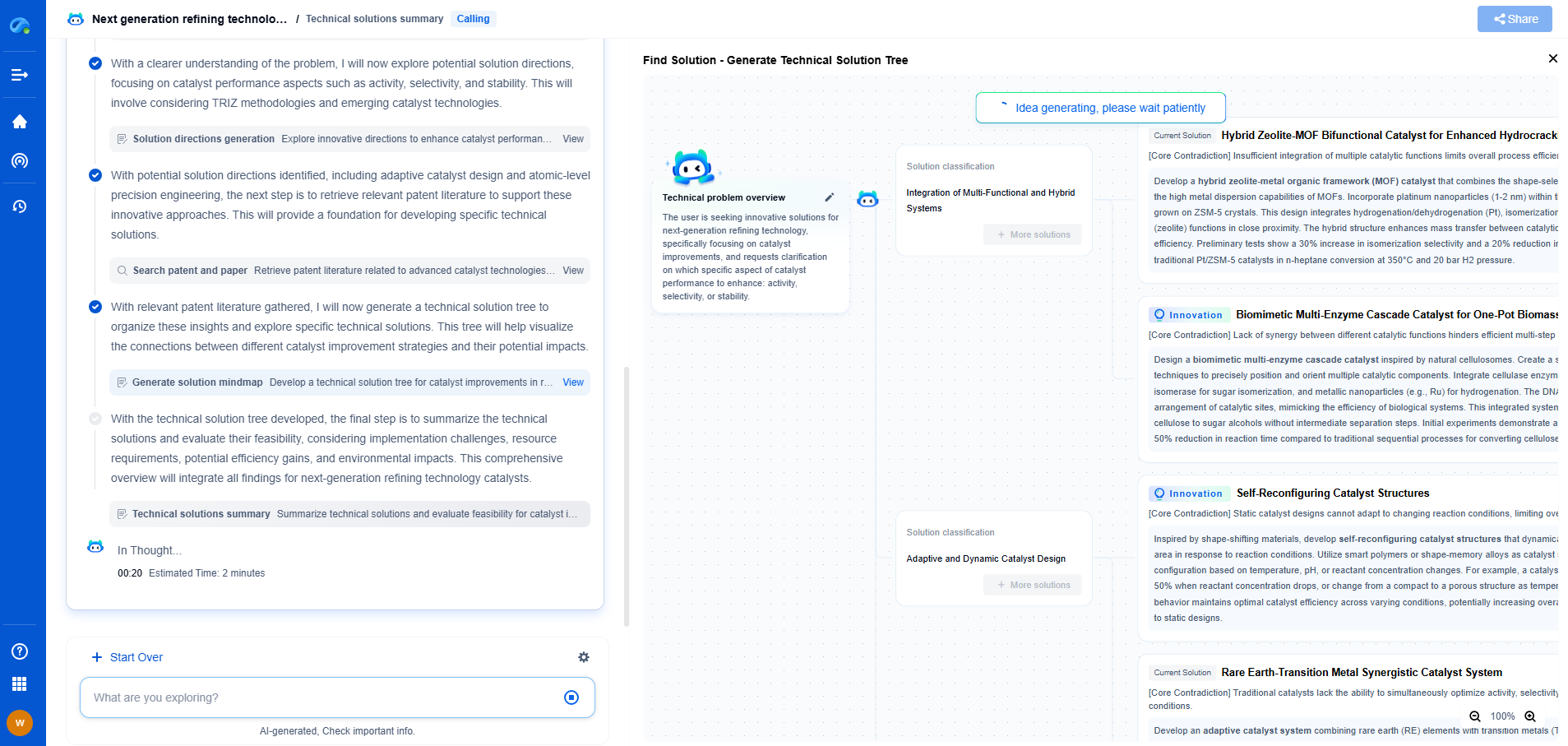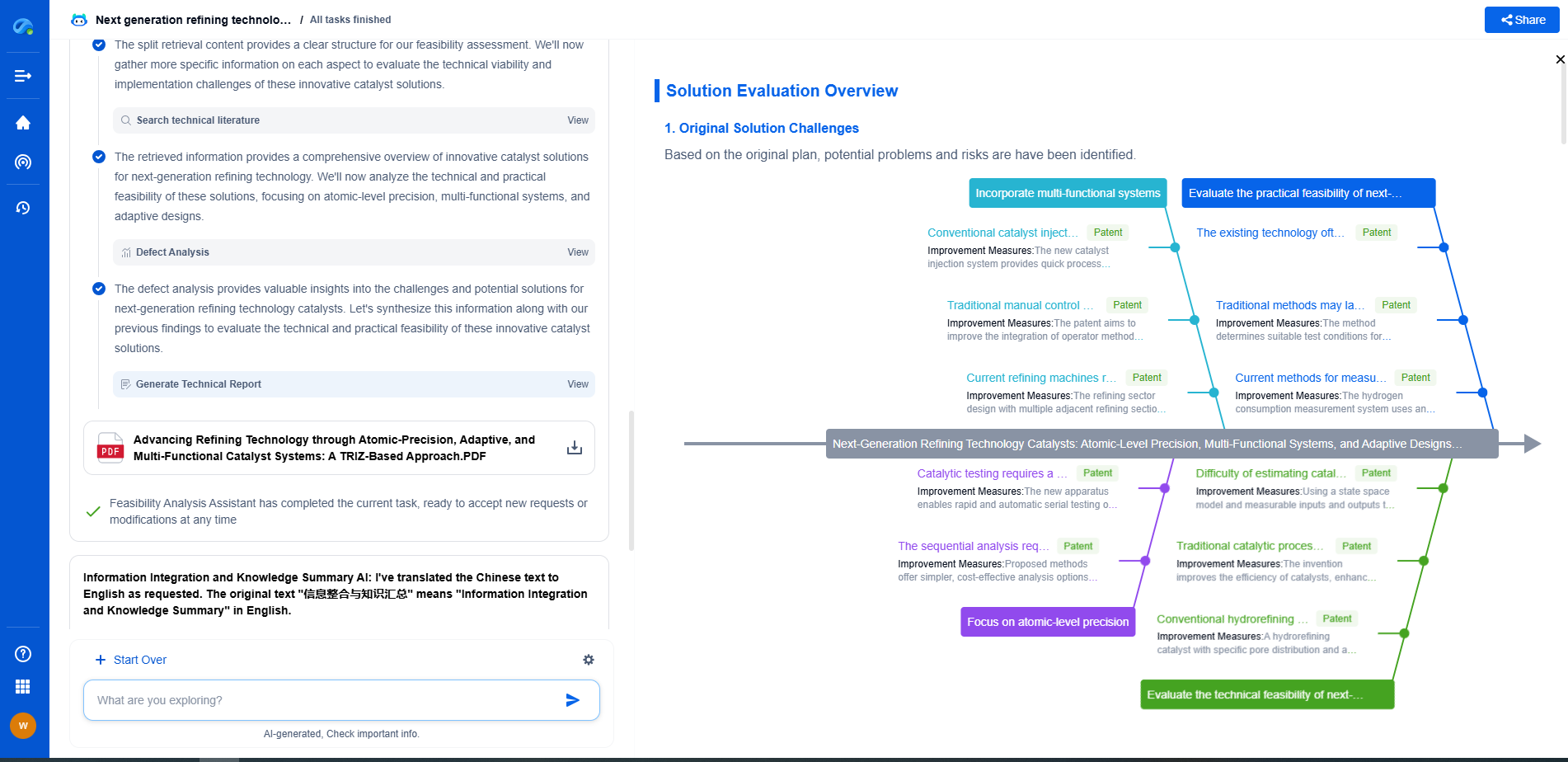Why Does Internal Resistance Increase with Battery Aging?
JUN 20, 2025 |
Batteries are essential components in our everyday lives, powering everything from small gadgets to electric vehicles. One of the critical factors influencing battery performance and longevity is internal resistance. As batteries age, their internal resistance tends to increase, affecting efficiency and capacity. But why does this happen? Let’s explore the reasons behind this phenomenon.
What is Internal Resistance?
Internal resistance in a battery refers to the opposition to the flow of electric current within the battery. It is caused by the materials and construction of the battery cells, including the electrodes, electrolyte, and separator. Internal resistance plays a crucial role in determining the overall performance of a battery, influencing its voltage, capacity, and efficiency.
The Aging Process in Batteries
Batteries undergo various changes as they age, influenced by factors such as temperature, charge-discharge cycles, and chemical reactions within the battery cells. These changes can lead to an increase in internal resistance, which in turn impacts the battery's ability to deliver power effectively.
Factors Contributing to Increased Internal Resistance
Electrode Degradation: Over time, the materials used in the battery electrodes can degrade due to repeated charging and discharging cycles. This degradation can cause the formation of unwanted chemical compounds on the electrode surfaces, which obstruct the flow of electrons and increase resistance.
Electrolyte Decomposition: The electrolyte in a battery facilitates the movement of ions between the electrodes. Over time, the electrolyte can break down or decompose, forming byproducts that can hinder ion flow, thereby increasing internal resistance.
Separator Damage: The separator is designed to prevent direct contact between the positive and negative electrodes while allowing ion transfer. As batteries age, the separator can become damaged due to mechanical stress or thermal effects, leading to increased resistance.
Formation of Solid-Electrolyte Interphase (SEI): In lithium-ion batteries, a solid-electrolyte interphase layer can form on the anode during the first few cycles. This layer initially protects the anode but can become thicker over time, increasing internal resistance and reducing battery efficiency.
Impact of Increased Internal Resistance
Reduced Capacity: As internal resistance rises, the battery's capacity to hold and deliver charge diminishes. Users may notice that their devices require more frequent charging or that the battery doesn't last as long as before.
Lower Efficiency: Increased internal resistance results in a higher energy loss during charge and discharge cycles, leading to reduced efficiency and increased heat generation. This can further accelerate the aging process and potentially shorten the battery’s lifespan.
Voltage Drop: A battery with high internal resistance may exhibit a more significant drop in voltage under load, which can affect the performance of the device it powers.
Mitigating Internal Resistance Increase
Maintaining optimal battery performance requires strategies to mitigate the increase in internal resistance. Regularly maintaining appropriate charging and storage conditions, avoiding extreme temperatures, and using batteries within recommended cycles can help manage resistance levels. Additionally, advances in battery technology, such as the development of more stable materials and better battery management systems, continue to address the challenges posed by internal resistance.
Conclusion
Understanding why internal resistance increases with battery aging is crucial for managing battery health and performance. By recognizing the factors that contribute to increased resistance and taking steps to mitigate these effects, users can extend the lifespan of their batteries and ensure reliable and efficient device operation. As technology progresses, innovations in battery design and materials will continue to improve battery longevity and minimize the impacts of aging on internal resistance.
Accelerate Breakthroughs in Fuel Cell and Battery Innovation—with the Power of AI
From solid-state battery breakthroughs to high-efficiency hydrogen fuel cells, keeping pace with fast-evolving chemistries, global patent landscapes, and emerging application pathways is an ever-growing challenge for R&D and IP professionals.
Patsnap Eureka, our intelligent AI assistant built for R&D professionals in high-tech sectors, empowers you with real-time expert-level analysis, technology roadmap exploration, and strategic mapping of core patents—all within a seamless, user-friendly interface.
Whether you're optimizing cathode formulations, evaluating electrolyte stability, or navigating the crowded patent space around battery pack design, Eureka empowers you to move faster and with greater confidence.
Start your journey with Patsnap Eureka today—streamline your research, enhance decision-making, and power the future of energy with AI-driven clarity.
- R&D
- Intellectual Property
- Life Sciences
- Materials
- Tech Scout
- Unparalleled Data Quality
- Higher Quality Content
- 60% Fewer Hallucinations
Browse by: Latest US Patents, China's latest patents, Technical Efficacy Thesaurus, Application Domain, Technology Topic, Popular Technical Reports.
© 2025 PatSnap. All rights reserved.Legal|Privacy policy|Modern Slavery Act Transparency Statement|Sitemap|About US| Contact US: help@patsnap.com

